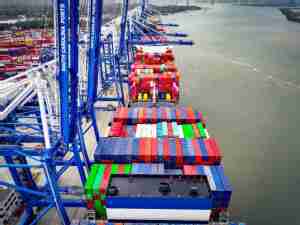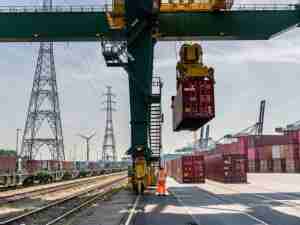Cargoes at Indian ports are expected to top 1 billion tons in 2010 compared to about 845 million tons last year, India's shipping secretary K. Mohandas said. This is line with a broader Asian business boom and shipping companies will have to expand to meet rising demand.
"Vis-a-vis last year the shipping industry has definitely done better this year," said S. Hajara, Chairman and Managing Director, Shipping Corp of India. "The topline is expected to grow for most of the shipping companies."
Strong growth within Asia is helping support shipping firms. China COSCO Holdings Co swung to the black in the second quarter on recovering trade, while Singapore's Neptune Orient Lines, the world's fifth-largest container shipping firm, carried 13 percent more containers in the four weeks to Aug 20 compared to a year ago.
Big shipping firms such as SCI, GE Shipping and Varun Shipping Co are in talks for ship acquisitions both in India and overseas as they seek to upgrade their fleet to newer models and phase out old ones.
"We are consolidating our presence both in offshore as well as LPG. We will be looking at strategic acquisitions," said Yuddhishthir Khatau, vice chairman and managing director at Varun Shipping, which plans to enter markets in Brazil and Australia.
SCI, India's largest shipping firm, has set aside about $4.3 billion to buy 57 new vessels. It has also asked for expressions of interest from Indian shipyards for a 10-15 percent stake, to help it diversify into shipbuilding.
Private sector shipping firm Great Eastern Shipping is spending $572 million to acquire 8 vessels.
Rates Improve, but not Enough
But despite the wider scale of operations, lower freight rates are likely to weigh on margins this fiscal though the industry is opting for long-term charters and diversifying to higher-margin coal and dredging businesses to ease the blow.
The Baltic Exchange's main sea freight index, which tracks rates to ship dry bulk, has fallen more than 12 percent in 2010 from 3,005 points in December to 2,639 points now.
"Rates have improved over last year, but shipping rates will be under pressure till the end of 2011 because of supply side pressure," said SCI's Hajara.
Freight rates in the "bulk segment will remain under pressure for some time, around 6-9 months down the line," said Param Desai, analyst at Angel Broking. He expects overall shipping rates to pick up in the next fiscal.
The increased deliveries, particularly in dry bulk, are likely to weigh on both tanker and dry bulk markets, said Hajara.
Analysts said firms like GE Shipping and Mercator Lines have exposure to offshore and coal operations which have better margins.
"GE Shipping has an exposure to offshore segment which has better margins. If you look at Mercator they have dredging, coal and offshore operations," said Kapil Yadav, analyst at Dolat Capital. (Reuters)
Shipping margins for GE and Mercator will be only around 21-22 percent though overall operating margins can range around 34-35 percent this fiscal, boosted by their diverse business profile, Yadav said.
He also said Mercator and GE Shipping have several vessels on long-term charter, thus insulating them against the volatility of the spot market. (Reuters)










